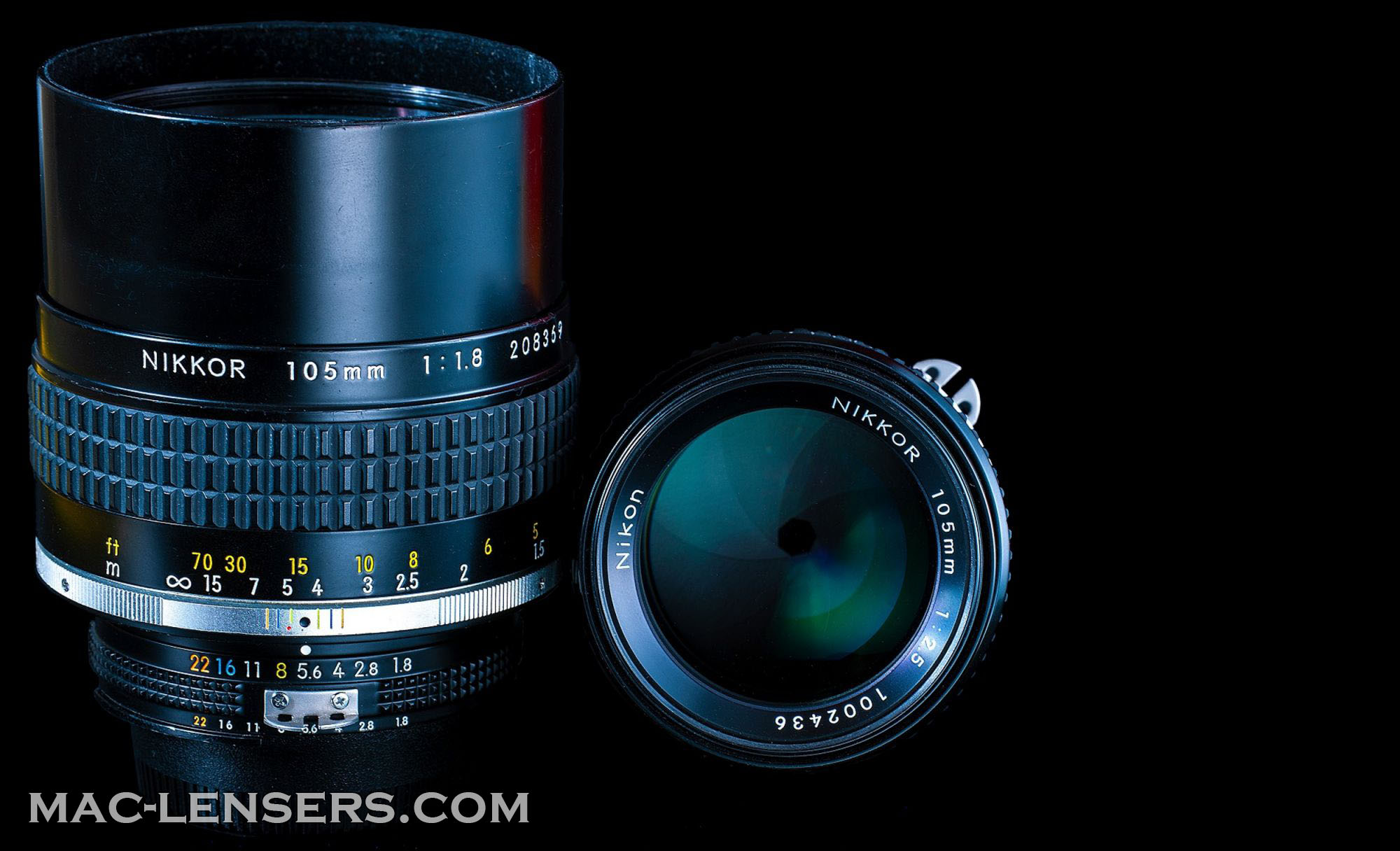Comparisons
Par Peluca
Hello friends,
Today we’re going to compare one lens that is legendary and his little less known brother. First, we have the legend; the Nikkor 105mm f/2.5. This lens of stellar performance was push forever to stardom by photographer Steve McCurry when he shot the very famous “Afghan Girl” picture.
Concerning the 105mm f/2.5, the optical design was completed in 1966, it is of the Xenotar type and consists of 5 optical elements in 4 groups, as shown below. In short, this lens has been around for more than 50 years and it is highly praised by photographers for being extremely sharp and versatile. For me, this lens is a slap in the face of these photographers that disdain old lenses because they are not as good as moderns ones, poor lads.
The contender is of a slightly more recent design as it was completed in 1976 and the lens was released to the public in 1981, this lens is the Nikkor 105mm f/1.8 Ais. This 10 year younger sibling has also a Xenotar type optical design with 5 elements on 5 groups. According to Nikon’s “1001 Nights” series achieving 1.8 with such a design is quite a feat.

OK, this is for the introduction of both lenses. Note that the Nikkor 105mm f/2.5 was sold between 1971 and 2005; the f/1.8 between 1981 and 2005. Although the Nikkor 105mm f/1.8 was sold at about 40k samples during his 24 year lifespan, it is not as easy to find as the f/2.5, which was made by the hundreds of thousands.
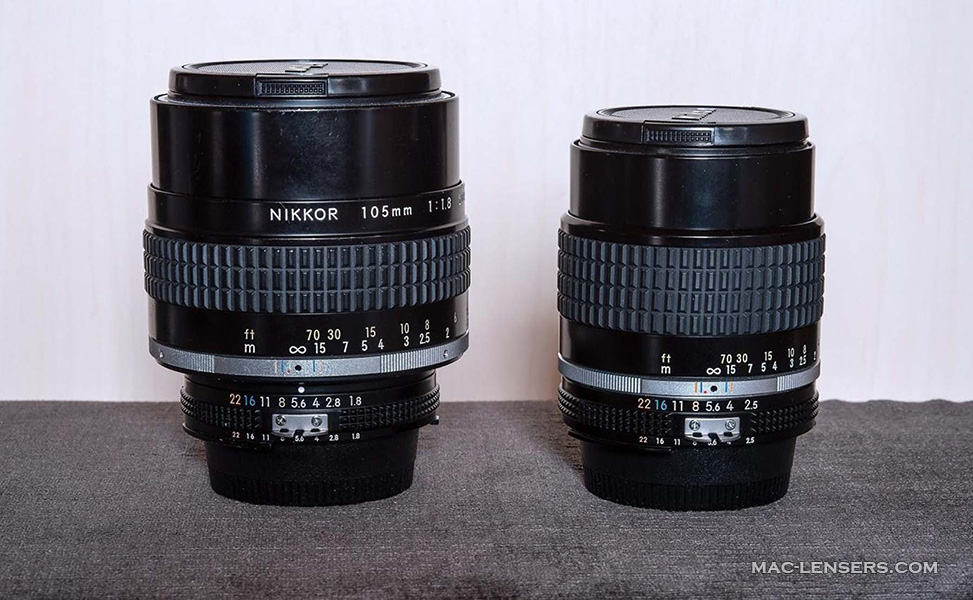
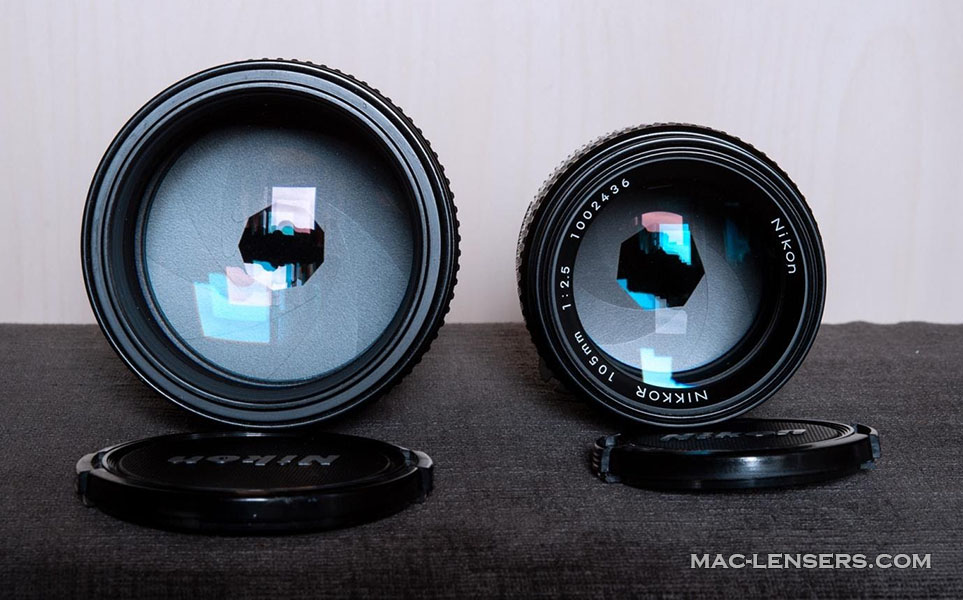
So, these are the guys, construction-wise there is nothing to say, pure metal and glass typical of the Ai and Ais series, smooth focus, build-in hoods, and a very nice looking design. Now, the difference in size is quite substantial, as it is the price second-hand. The f/2.5 can be found in pristine condition for about 200€, whereas the f/1.8 is about 400€.
But let’s see by comparison if it is worth the effort spending the double, or if you can live with the f/2.5 which is by itself a wonderful lens.
Now the comparison,
We took 2-sets of pictures, one at the closest focusing position, which is about 1m (although the f/2.5 can focus one or two centimetres closer).
If we talk aperture, the f/1.8 has a clear advantage here as by default can gather 71.7% more light than the f/2.5 (see how to calculate aperture ratios here). On the paper this is a clear advantage and may let you get that otherwise difficult shot. So, we have one point for the f/1.8, the price to pay is that the image is generally soft and lacks contrast (maybe some post-processing may help that). However, bokeh transition is quite smooth and the image in general is quite pleasing. Next to it, we have the f/2.5 wide open, which is obviously sharper due to the aperture difference. Also, the f/2.5 produces warmer colors which give the image an overall more pleasing rendition.
For the 105mm f/1.8, at f/2 the image differs so little from the one at f/1.8 that we skipped it altogether.


The first common aperture to both lenses is f/2.8, so we can talk of a real comparison. As already noticed, the colors of the f/2.5 are more pleasing (but that’s just my perception) and the image is generally brighter, which indicates that the f/1.8 has possibly lower transmittance. However, the f/1.8 has a clear advantage of being sharper all over the frame. But this is somehow to be expected as the f/1.8 is already one stop closed, while the f/2.5 is still wide open.
Also, one can see the difference in the bokeh bubbles behind, which are due to the difference of number of aperture blades between both lenses, 9 for the f/1.8 and 7 for the f2.5.


If we move to f/4 the trend seems to remain constant, that is, the f/1.8 is sharper but a bit darker and tones are generally colder.

At f/5.6 all sharpness differences are almost gone and only perceptible if you start pixel-peeping


At f/8 the trend seems to revert and the f/2.5 becomes brutally sharp, maybe a bit more than the f/1.8, but that’s very hard to tell. One thing is sure, the f/2.5 has a sweet spot between f/5.6 and f/8.

And at f/11, besides the tonal differences, it’s impossible to tell them apart.

That’s all for the test at shortest focal distance, and we can already see that both lenses deliver quite a performance. So far, we can say that they are even, the f/1.8 being slightly sharper but the f/2.5 offering a more interesting color palette.
But what about a realistic test on the outside, let’s check that:
I was visiting the Vimy ridge in France during the summer, which was a rather strategic point during First World War, a place really worth the visit since it is quite beautiful and full of history. This hill was captured on 9th april 1917 with the help of Canadian troops, in memory of the people died during that battle, there is a beautiful memorial that I took on UV for the dramatic effect it produces (see this article about UV photography), anyway, I let you here the UV images and then we get back to our comparison.
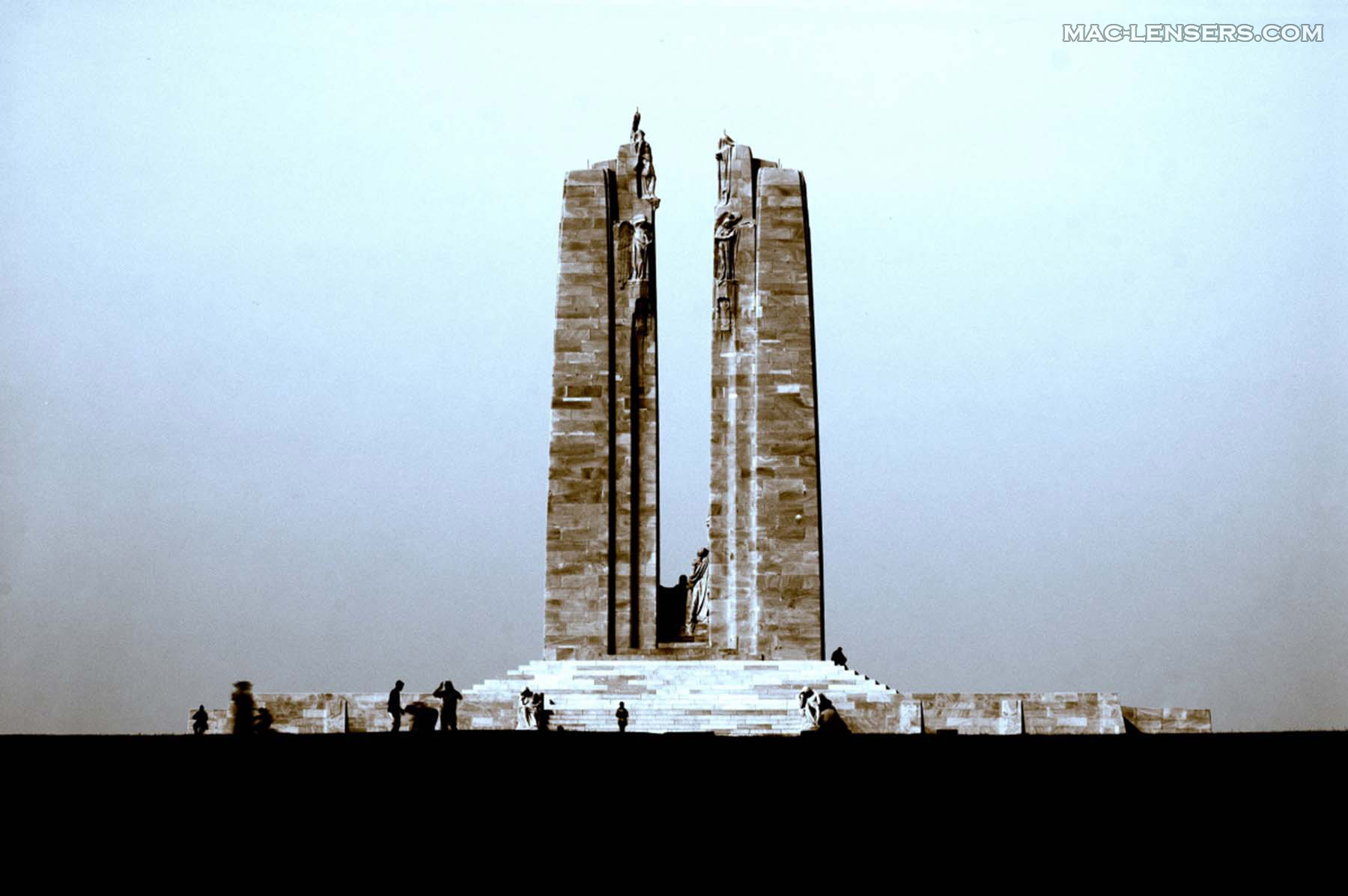
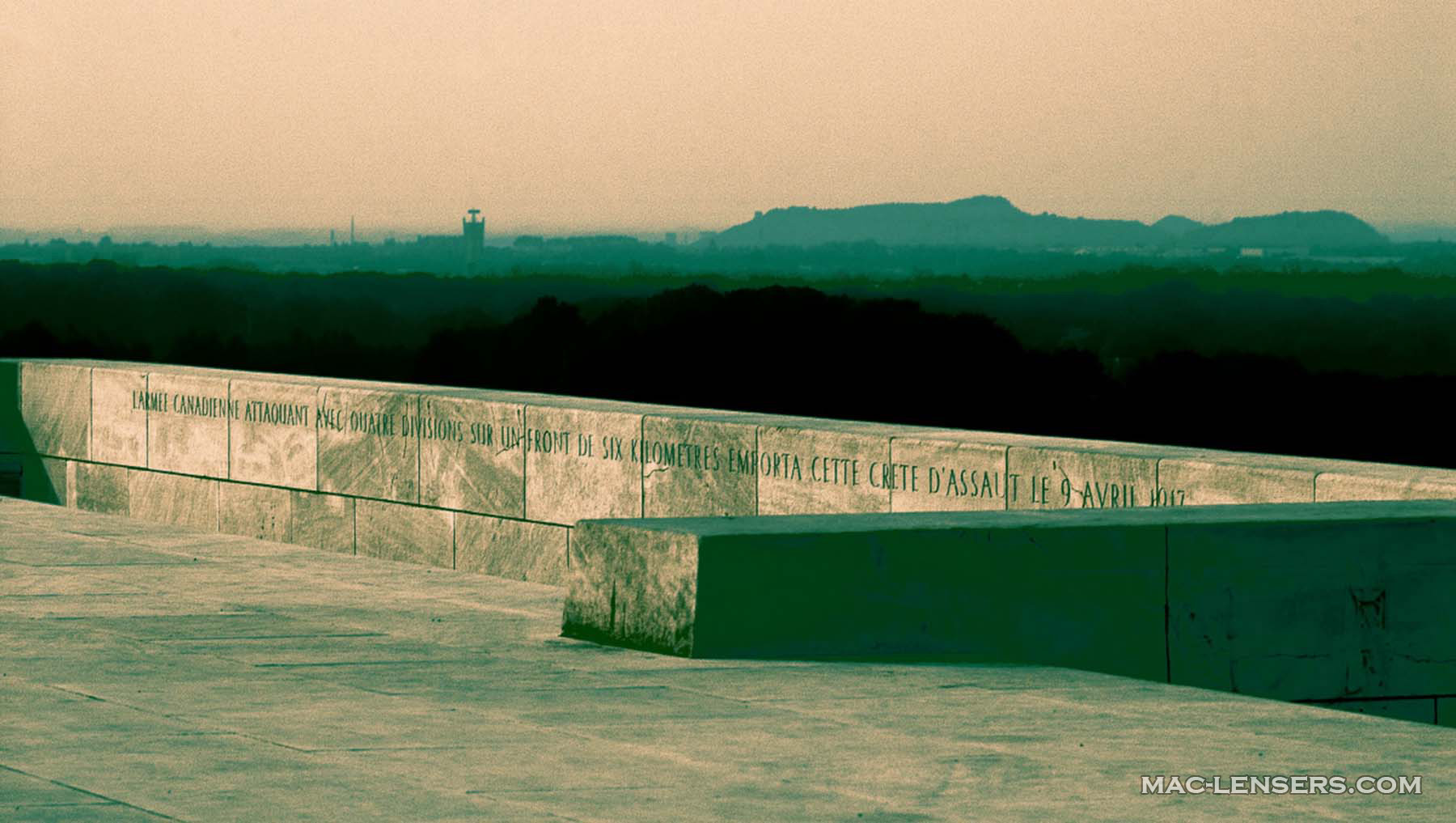
OK, during that visit I found this military cemetery (there are two) and it offered quite a complex view perfect for testing our lenses, so, here you go the first shot with both lenses wide open.

So, to differ to our previous test indoors, the color rendition of both lenses is quite good and almost impossible (at least for me) to make the difference between both. Actually the only way to tell both images apart is the bokeh, which is more pronounced on the f/1.8.
The focusing was done on the third tombstone on the front; here you have a 100% crop. The image for both lenses look great and besides the obvious softness due to the aperture difference, there is nothing much else to say.

If we go to the first common aperture between both lenses (i.e. f/2.8); we can do a true comparison. Both lenses deliver incredible results, yet, the f/1.8 as an edge on sharpness over the f/2.5.

And at f/4, it becomes near impossible to tell them apart, with the f/1.8 being, just, but just a bit shaper. And at f/5.6 and beyond, the difference is near impossible to spot.


So, conclusion?
Both lenses share a legendary status and not without good reasons, construction is beautiful, and as time goes, it is highly unlikely that such a built quality will ever come back. Optically both lenses perform beautifully, with the f/1.8 being slightly shaper between f/2.8 and f/5.6, but having lower transmittance (i.e. passing less light), contrary as one might assume from a lens having a larger aperture.
At f/8 and beyond, both lenses perform almost equally in terms of sharpness. Color-wise, there is a slight difference in rendition that is highly dependent on lightning conditions. This is probably due to a difference in coatings between both lenses.
So, which one to choose?
It’s a choice of availability, convenience, and budget as the f/1.8 is harder to find, larger and heavier, and cost twice as much as the f/2.5.
But at the end of the day, both will do the job beautifully
